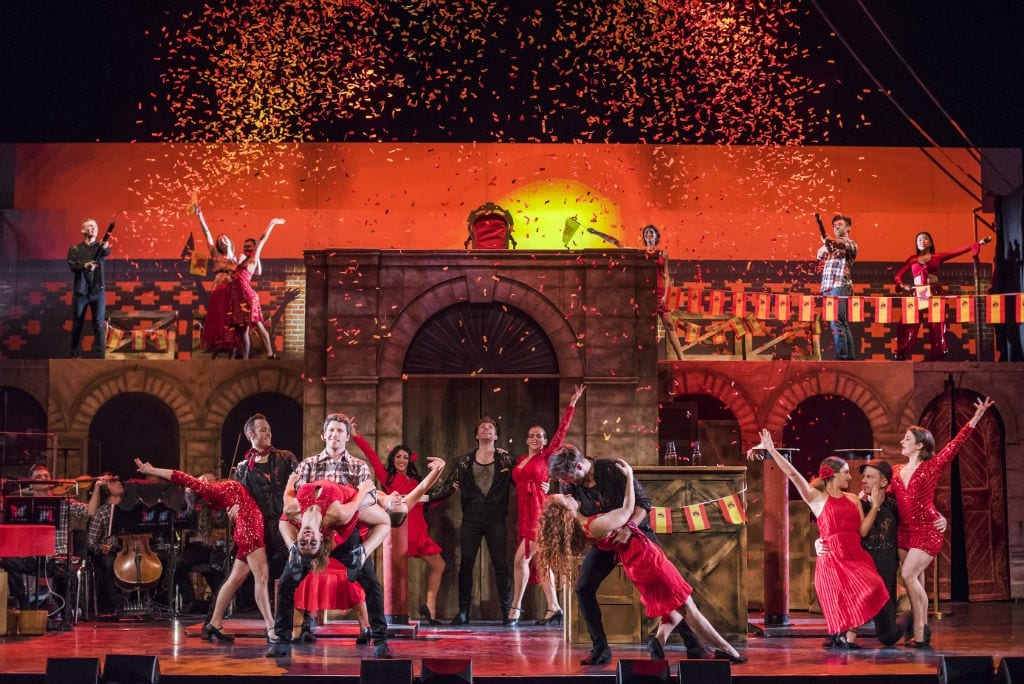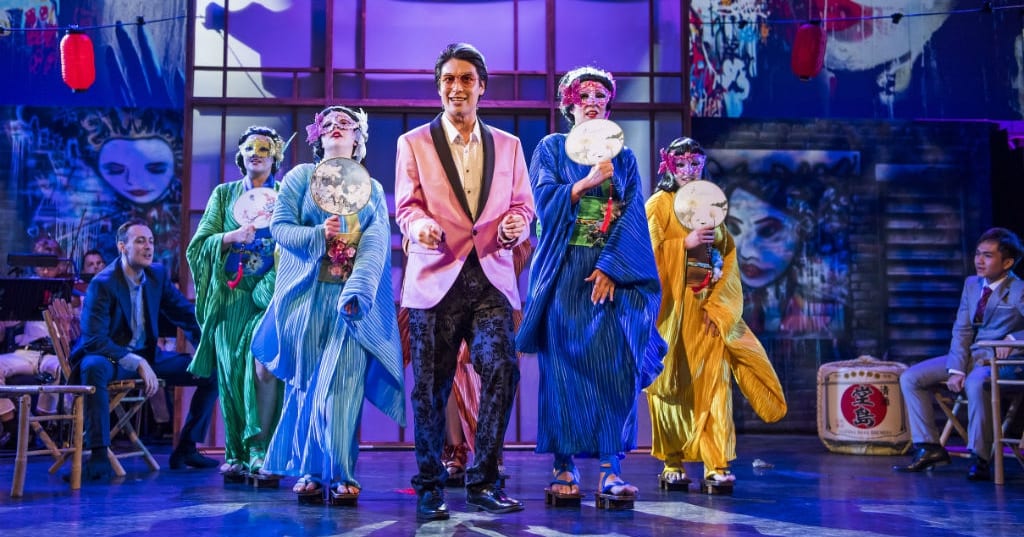TriOperas is a creative reimagination of three classic operas—‘Turandot’, ‘Madam Butterfly’, and ‘Carmen’—in an attempt to make opera accessible to a wider audience. In this performance, director and producer Pamela Tan-Nicholson depicts the operatic heroines Turandot, Butterfly, and Carmen and their stories of love and tragedy. Tan-Nicholson has translated each opera into English, with her own subtitles displayed by the stage, making it understandable to a first-time opera goer. In her translations, she ties together all three operas with similar phrases, such as ‘tender love’ and ‘what will be will be’. In doing so, she has subconsciously linked each opera together under a single production, with each story connected by themes of love, lust, and honour, which ultimately result in death.
The opera opens with aerial dancers flying down a trapeze in what seems to be a slow-motion battle scene. Unfortunately this dramatic opening falls short failing to impress, however this may be due to a cast injury which resulted in a last-minute substitution. The story of Turandot, which reimagines Puccini’s work, tells the story of a Chinese warrior princess who wishes to keep her honour and virginity. In order to do so, her suitors must face a deadly task—to answer three riddles. Those who fail are sent to the scaffolds. Starting slow, the abridged ‘Turandot’ loses several important plot details, such as the princess’s warrior background and the circumstances which have befallen her suitor, Calaf. This lack of background detail leaves unexperienced audience members reading and rereading the program in an attempt to understand the plotline. Additionally, the briefness of the vignette forces rapid and cursory introductions of key characters. In Calaf’s introduction scene, Tan-Nicholson experiments with hip-hop to appeal to a different audience. This experiment falls flat as the choreography is sloppy and removes the audience from the drama of the story. Calaf, enamoured with the princess, solves each riddle but still has not won her heart. Wishing to gain her love, Calaf gives the princess her own riddles resulting in tragedy and the overwhelming power of love, which expresses itself through the sacrifices by the character, Liu. Saving this vignette with her vocal talents, the actress who plays Liu has a beautiful soprano that hauntingly falls across the audience. As she sings of her love, she shows the audience how love is just as powerful as the sword. The ending of this first vignette did not leave me enthralled, however during the first interval, I was able to think about the potential of the story and was definitely intrigued by the themes which Tan-Nicholson emphasised.

The production picks up speed with the performances of ‘Madam Butterfly’. Set in Japan, Puccini’s ‘Madam Butterfly’ depicts the heart-breaking love story of the geisha Butterfly, and U.S. naval officer Pinkerton. Tan-Nicholson manages to consolidate the story so that no imperative details were lost in her retelling. Once again, Tan-Nicholson uses different arts to add to the opera’s production. In a scene in which Pinkerton seduces Butterfly, different types of dance, such as tap and waltz, are introduced to show the changes which result due to their relationship. Although Butterfly is besotted, Pinkerton treats the affair as a fling, eventually returning to America leading to questions of love and betrayal. During ‘Madam Butterfly’ the actors transport the audience to Japan, and share Butterfly’s love and loss. With each note she sings, Butterfly not only gives herself to Pinkerton, but to the audience. The vignette ends with an interval during which I reflected upon the beauty and substance Tan-Nicholson was able to pack into just half an hour.
The trio is completed by Bizet’s ‘Carmen’, which recounts the story of the gypsy, Carmen, and how her ‘Live Fast, Die Young’ mentality affected her love. Saved for last, this is the most impressive vignette within the production. With the curtain’s raising, the dancers flash their skirts and twirl to the music, seducing the men in the scene and the audience in the theatre. Jumping from suitor to suitor, Carmen wants to enjoy life and ‘fly high’, especially when she meets the famous torero Escamillo. His machismo is shown in a bullfight scene, which has the audience gasping. Tan-Nicholson incorporates the untraditional element of the Chinese Lion Dance. This was successful as the audience cheered for Escamillo and whimpered for the bull, allowing us to see Escamillo in the same way Carmen sees him. In her quest for satisfaction, she faces the repercussions of her lifestyle leading to conflict with her former lover, José.
All three classics tell stories of misguided love. Although each title character is often called a heroine, Tan-Nicholson is able to hone into the key themes within each opera and consolidates the important material in her thirty minute pieces. Aimed at opera-novices, TriOperas gives newcomers bite-sized pieces which are easily digestible. While TriOperas leaves something to be desired in terms of the overall cohesion of the show, it did not disappoint as a new form of opera. Though seasoned opera goers will not be satisfied with the production, TriOperas is the perfect introduction to opera for anyone who wishes to dip their toe into what can seem like a foreign world.

